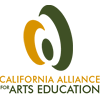Guest Blog: Surveying Candidates for State Legislature
 Guest Blog By: Jackie Koppell, Director of Programs, California Arts Advocates
Guest Blog By: Jackie Koppell, Director of Programs, California Arts AdvocatesThe nonprofit arts in California generate billions of dollars each year. The California Arts Council has calculated (2004) that nonprofit arts organizations in California account for $5.4 billion in economic activity and support some 160,000 full time equivalent (FTE) jobs, returning $330 million in state and local taxes. When you include the commercial creative sector—TV, movies, music, design, architecture, publishing, etc.—the figures become even more impressive. The 2011 "Otis Report on the Creative Economy of the Los Angeles Region" states that in LA and Orange Counties alone the economic impact of the creative industries amounted to an astounding $115 billion, generating 642,000 jobs and returning $3 billion in state and local taxes.
QUESTION: Given the importance of California's creative economy, from Hollywood and Silicon Valley to suburban and rural communities around the state, how would you act as an advocate for this sector, and what policies would you back to strengthen the arts and culture infrastructure in every California community?
- Uptown and Oakland School for the Arts, Oakland -Oakland, once known for its poverty and urban decay, was voted one of the 2012 "Top 5 Places to Go" by the New York Times and the arts school is part of this revitalization.
- Naval Training Center, San Diego -Having been transformed, it is now called Liberty Station and has become a hub for the arts, culture and nonprofit organizations along the waterfront.
- Dean DeCarli Waterfront Plaza, Stockton -The new focal point of the downtown core, the waterfront has turned into a recreational and entertainment center and provides a venue for art shows and concerts.
QUESTION: How would you leverage the arts and culture to fill the gap left behind by redevelopment to revitalize and repurpose our downtowns, neighborhoods, former military bases and rural communities?
Education
Steve Jobs, founder of one of the great technology companies, understood the value of the arts as a tool for life, an outlet for creativity and one that has a direct impact on the success of an individual in the jobs market.
In California, the arts has been declared as one of the 5 core academic subjects that every child should be taught in grades K-12. Yet there is little or no accountability in ensuring that every child, regardless of their socioeconomic status has access to these 21st century skills. Though great strides have been made to restore creativity in the classroom, school districts across the state are struggling to provide a comprehensive arts education.
QUESTION: What would you do to ensure that every school in the state has the resources to provide every student with a quality education that includes the arts?
- Tourists who participated in an arts and culture activity stay longer (3.8 days vs 1.8 days for all visitors
- Nearly 60% of those visitors use hotel accommodations, which provides Hotel Tax dollars to local communities.
- Cultural Visitors spend more than twice as much per trip ($561 in 2011) as compared with the average tourist’s $235.
QUESTION: How would you be an advocate for promoting California’s rich and diverse cultural offerings and assure state funding for the State of California Division of Tourism is used to promote arts, culture and heritage throughout our state?










